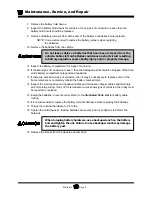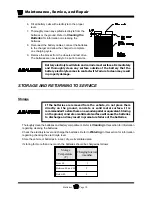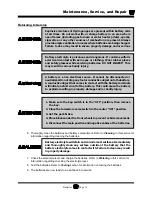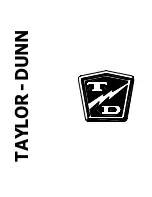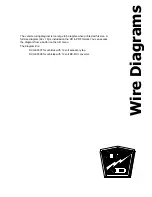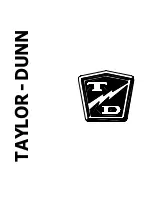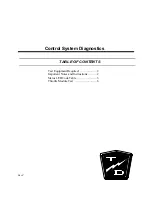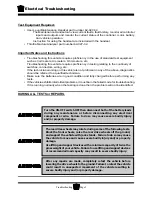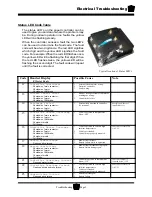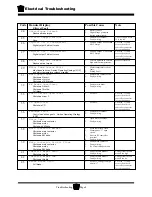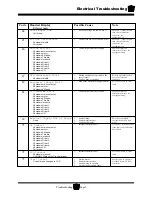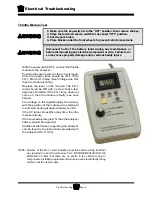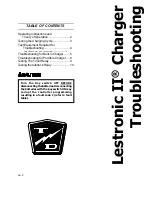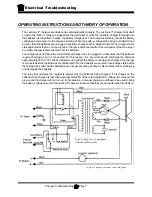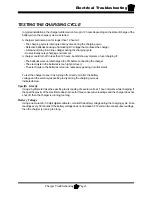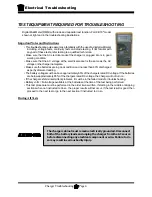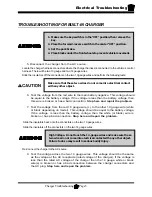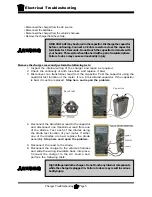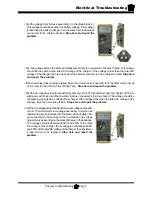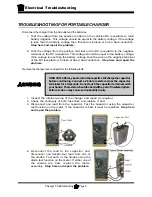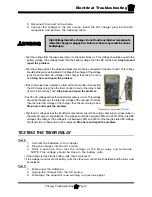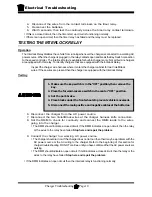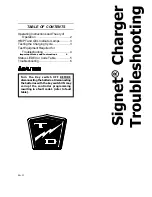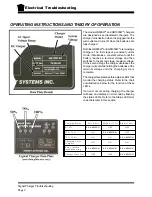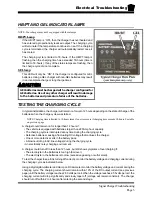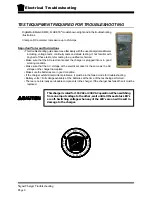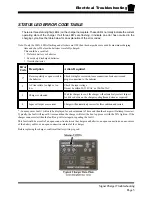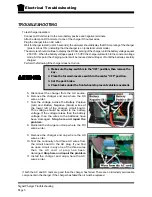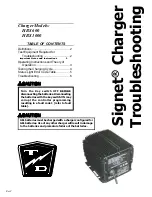
Electrical Troubleshooting
Charger Troubleshooting
Page 2
OPERATING INSTRUCTIONS AND THEORY OF OPERATION
The Lestronic II
®
chargers are designed as semiautomatic chargers. The Lestronic II
®
charger turns itself
on when the “built- in” charger is plugged into the wall outlet, or when the “portable” charger is plugged into
the batteries. As the battery charges, the battery voltage rises. The charger periodically checks the battery
voltage and compares it to the previous reading. When the battery voltage stops rising a predetermined
amount, then the batteries are no longer accepting a charge and the charger shuts off. The charger will not
start again unless the AC cord on a “built-in” charger is disconnected from the wall outlet, or the DC plug on
a portable charger is disconnected from the batteries.
The charger does not check the current state of charge when it is plugged in, it assumes that the batteries
require charging when it is connected. For this reason, it is recommended to discharge the batteries
approximately 50% (1175-1200 as indicated on a hydrometer) before connecting the charger. If the charger
is connected before the batteries are discharged 50%, the batteries may enter an overcharge state before
the charger can sense that the batteries are no longer accepting a charge. This could result in overcharging
and damaging the batteries.
The relay that operates the charger is powered by the batteries being charged. If the voltage on the
batteries to be charged is less than approximately 65% of the rated charger DC voltage, the relay will not
pick up and the charger will not turn on. In this situation, a manual charger would have to be used to bring
the battery voltage up so that the Lestronic
®
charger can sense that they are connected and turn itself on.
Typical Charger Internal Wire Diagram
Not all chargers are equipped
with the lockout relay
Summary of Contents for B0-248-48AC
Page 2: ......
Page 70: ...Maintenance Service and Repair Steering Page 22 Exploded View of Steering Gear...
Page 88: ...TAYLOR DUNN...
Page 114: ...TAYLOR DUNN...
Page 120: ...TAYLOR DUNN...
Page 132: ...TAYLOR DUNN...
Page 134: ...TAYLOR DUNN...
Page 164: ...Illustrated Parts Parts Page 2 Front Axle...
Page 166: ...Illustrated Parts Parts Page 4 Steering Knuckle...
Page 168: ...Illustrated Parts Parts Page 6 Steering Linkage...
Page 174: ...Illustrated Parts Parts Page 12 Rear Suspension View from rear...
Page 176: ...Illustrated Parts Parts Page 14 Transmission Gear Case...
Page 180: ...Illustrated Parts Parts Page 18 Rear Brakes Front Brakes...
Page 182: ...Illustrated Parts Parts Page 20 Brake Lines Master Cylinder...
Page 184: ...Illustrated Parts Parts Page 22 Motor...
Page 186: ...Illustrated Parts Parts Page 24 Motor Mount Apply 94 421 34 grease to inside of motor coupler...
Page 188: ...Illustrated Parts Parts Page 26 Wheels and Tires Ref wheel hub 1 2 5 assembly 4 3 6 7 8 9 10...
Page 196: ...Illustrated Parts Parts Page 34 Lighting Stobe Light 4 1 2 3 5 6 7...
Page 206: ...Illustrated Parts Parts Page 44 Seat Cushions and Deck...
Page 208: ...Illustrated Parts Parts Page 46 Mirrors 92 202 00 Assembly Miscellaneous Frame Components...
Page 210: ...Illustrated Parts Parts Page 48 Decals...
Page 212: ...Illustrated Parts Parts Page 50 Cab Options Steel Cab Fiberglass cab...
Page 218: ...Illustrated Parts Parts Page 56 Hydraulic Dump Body Option...
Page 220: ...Illustrated Parts Parts Page 58 Rear Cargo Box 1 2 3 4 5 6 5 Top Covers...
Page 222: ...Illustrated Parts Parts Page 60 Hitches...
Page 224: ...TAYLOR DUNN...

